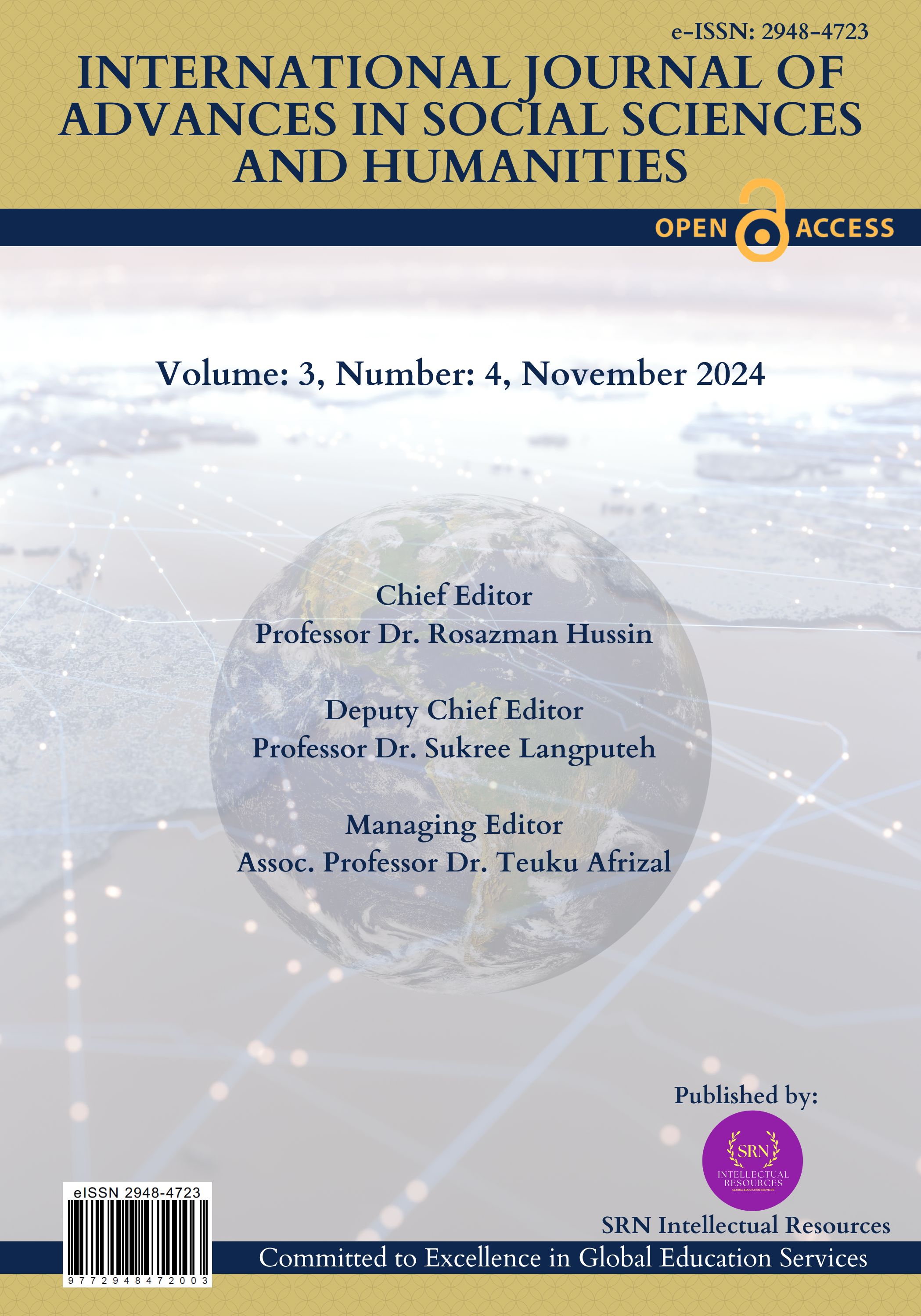A Model for Community-Based Seaweed Cultivation in South-west Maluku, Indonesia: Strengthening Coastal Livelihoods
https://doi.org/10.56225/ijassh.v3i4.367
Keywords:
Seaweed cultivation, Community-based model, Sustainability, Public welfareAbstract
Institutional development plays a vital role in advancing the success and sustainability of community-based seaweed farming, particularly in Southeast Maluku, Indonesia. This study seeks to design a comprehensive institutional model tailored to the unique needs of seaweed farming communities in the region. The model emphasizes four key components: the division of tasks among stakeholders, effective and inclusive decision-making processes, transparent and accountable financial management systems, and robust monitoring and evaluation mechanisms. These elements are designed to strengthen institutional capacity and foster greater collaboration among farmers. The central hypothesis of this study is that by improving institutional structures, farmers will experience enhanced cooperation, increased bargaining power within the seaweed supply chain, and improved sustainability of their cultivation practices. A well-structured institution can support fairer market access, equitable profit distribution, and collective resilience to economic and environmental challenges. In turn, these improvements are expected to lead to more stable and long-term farming practices. The proposed institutional model not only aims to increase the economic viability of seaweed farming but also to promote social cohesion and environmental stewardship within coastal communities. The study aspires to enhance the overall welfare of seaweed farmers by ensuring that institutional arrangements are both participatory and adaptive to local contexts. Ultimately, this research contributes to the broader discourse on institutional design in small-scale agriculture and aquaculture. It offers a replicable model that can be adapted for similar community-based farming initiatives in other coastal and rural regions, both within Indonesia and beyond.
Downloads
References
Buchori, I., Pramitasari, A., Sugiri, A., Maryono, M., Basuki, Y., & Sejati, A. W. (2018). Adaptation to coastal flooding and inundation: Mitigations and migration pattern in Semarang City, Indonesia. Ocean and Coastal Management, 163(July), 445–455. https://doi.org/10.1016/j.ocecoaman.2018.07.017
Claisse, J. T., Pondella, D. J., Love, M., Zahn, L. A., Williams, C. M., Williams, J. P., & Bull, A. S. (2014). Oil platforms off California are among the most productive marine fish habitats globally. Proceedings of the National Academy of Sciences of the United States of America, 111(43), 15462–15467. https://doi.org/10.1073/pnas.1411477111
Hadiyanto, H., Arief Rahman Halim, M., Muhammad, F., Soeprobowati, T. R., & Sularto, S. (2021). Potential for environmental services based on the estimation of reserved carbon in the mangunharjo mangrove ecosystem. Polish Journal of Environmental Studies, 30(4), 3545–3552. https://doi.org/10.15244/pjoes/126374
Irawan, L. Y., Kamal, M. F. M., Devy, M. M. R., Prasetyo, W. E., Lelitawati, M., & Sumarmi. (2023). Using physical parameters for tourism potential mapping: Study case of beach tourism destination in Gajahrejo, Malang. IOP Conference Series: Earth and Environmental Science, 1190(1), 012014. https://doi.org/10.1088/1755-1315/1190/1/012014
Lestari, E., Wibowo, A., & Rahayu, P. (2021). Cultural Transformation in the Development of Home Industries in Karanganyar Regency, Central Java, Indonesia. E3S Web of Conferences, 316(04002). https://doi.org/10.1051/e3sconf/202131604002
Mardiyani, Y. ; M. (2015). Management Analysis Journal. Management Analysis Journal, 4(1), 65–75.
Narwal, S., Kaur, M., Yadav, D. S., & Bast, F. (2024). Sustainable blue economy: Opportunities and challenges. Journal of Biosciences, 49(1). https://doi.org/10.1007/s12038-023-00375-x
Nia Sarinastiti, E., & Sidiq Wicaksono, M. (2020). Mapping Coastal Ecotourism Potential in Panggul District, Trenggalek, East Java. IOP Conference Series: Earth and Environmental Science, 530(1). https://doi.org/10.1088/1755-1315/530/1/012024
Noor, A. (2013). The Estimation of Economic Benefits of Urban Trees Using Contingent Valuation Method in Tasik Perdana , Kuala Lumpur. Pertanika Journal of Tropical Agriculture, 36(1), 99–114.
Pascoe, S. (2019). Recreational beach use values with multiple activities. Ecological Economics, 160(March 2018), 137–144. https://doi.org/10.1016/j.ecolecon.2019.02.018
Rami, A. A., Faiq, M., Aziz, A., & Muhamad, N. A. (2021). Characteristics and Success Factors of Rural Community Leadership in Malaysia : A Focus Group Analysis. Pertanika Journal of Science and Technology, 29(3), 1591–1609.
Renjaan, M. J., & Raka Susanty, I. I. D. A. (2020). Carrying capacity and tourism suitability of Ngurbloat Beach, Southeast Maluku Regency. IOP Conference Series: Earth and Environmental Science, 517(1). https://doi.org/10.1088/1755-1315/517/1/012011
Sanjaya, I. D. K. W., Merit, I. N., & Astarini, I. A. (2022). Strategi Pengelolaan Efektif Ekosistem Terumbu Karang Di Kawasan Konservasi Nusa Penida. ECOTROPHIC : Jurnal Ilmu Lingkungan (Journal of Environmental Science), 16(2), 122. https://doi.org/10.24843/ejes.2022.v16.i02.p01
Sarwidi, Aji, L., & Satyarno, I. (2019). Identification of Paths and Places of Tsunami Evacuation Based on P646 Fema for Tourism Beaches in the Regency of Gunungkidul, Yogyakarta. IOP Conference Series: Earth and Environmental Science, 273(1). https://doi.org/10.1088/1755-1315/273/1/012004
Wagey, B. T., Boneka, F. B., & Mantiri, R. (2020). Status of marine biodiversity and community perception on marine conservation in Mantehage Island , Bunaken National Park , North Sulawesi , Indonesia. AACL Bioflux, 13(6), 3830–3839.
Weinberger, F., Sundt, S., Staerck, N., Merk, C., Karez, R., & Rehdanz, K. (2021). Shifting beach wrack composition in the SW Baltic Sea and its effect on beach use. Ecology and Society, 26(4). https://doi.org/10.5751/ES-12759-260443
Wibawa, B., Fauzi, I., Novianti, D. A., Shabrina, N., Saputra, A. D., & Latief, S. A. (2021). Development of Sustainable Infrastructure in Eastern Indonesia. IOP Conference Series: Earth and Environmental Science, 832(1). https://doi.org/10.1088/1755-1315/832/1/012045
Zhu, J., Wang, E., & Sun, W. (2019). Application of Monte Carlo AHP in ranking coastal tourism environmental carrying capacity factors Application of Monte Carlo AHP in ranking coastal tourism environmental carrying capacity factors. Asia Pacific Journal of Tourism Research, 1665(May). https://doi.org/10.1080/10941665.2019.1611610
Downloads
Published
How to Cite
Issue
Section
License
Copyright (c) 2024 Authors

This work is licensed under a Creative Commons Attribution 4.0 International License.


























